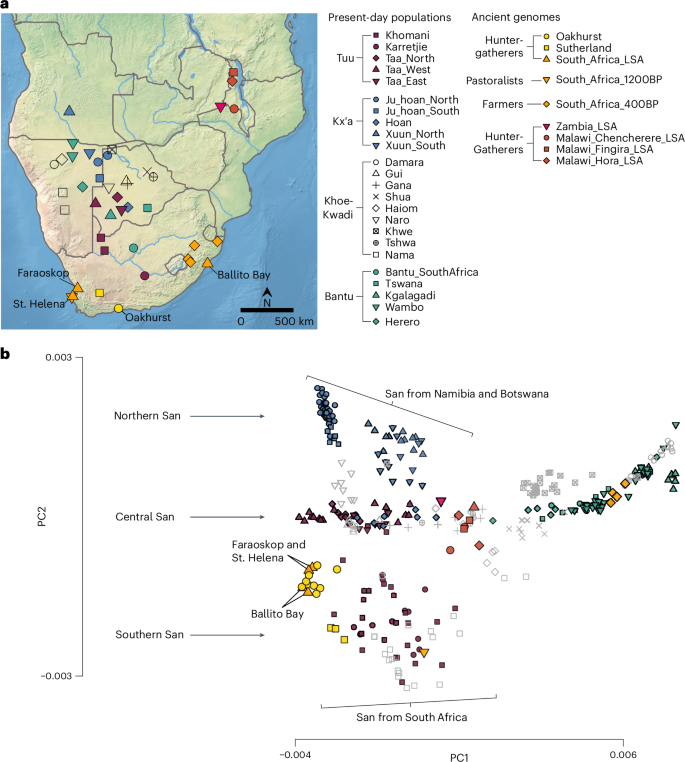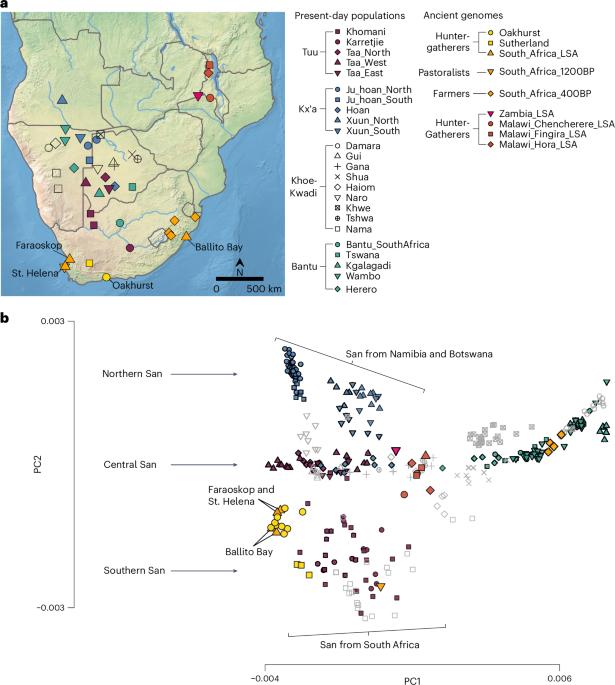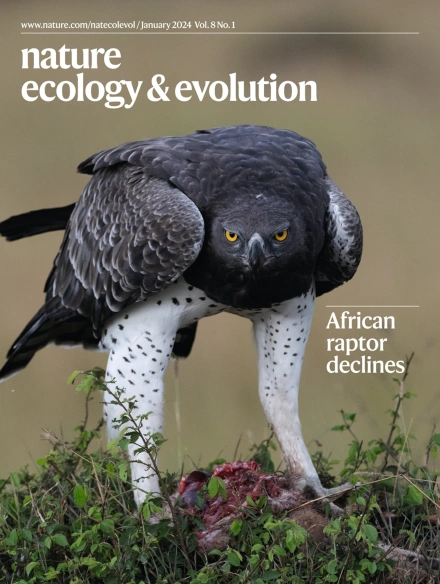9,000 years of genetic continuity in southernmost Africa demonstrated at Oakhurst rockshelter
IF 13.9
1区 生物学
Q1 ECOLOGY
引用次数: 0
Abstract
Southern Africa has one of the longest records of fossil hominins and harbours the largest human genetic diversity in the world. Yet, despite its relevance for human origins and spread around the globe, the formation and processes of its gene pool in the past are still largely unknown. Here, we present a time transect of genome-wide sequences from nine individuals recovered from a single site in South Africa, Oakhurst Rockshelter. Spanning the whole Holocene, the ancient DNA of these individuals allows us to reconstruct the demographic trajectories of the indigenous San population and their ancestors during the last 10,000 years. We show that, in contrast to most regions around the world, the population history of southernmost Africa was not characterized by several waves of migration, replacement and admixture but by long-lasting genetic continuity from the early Holocene to the end of the Later Stone Age. Although the advent of pastoralism and farming substantially transformed the gene pool in most parts of southern Africa after 1,300 bp, we demonstrate using allele-frequency and identity-by-descent segment-based methods that the ‡Khomani San and Karretjiemense from South Africa still show direct signs of relatedness to the Oakhurst hunter-gatherers, a pattern obscured by recent, extensive non-Southern African admixture. Yet, some southern San in South Africa still preserve this ancient, Pleistocene-derived genetic signature, extending the period of genetic continuity until today. Oakhurst rockshelter in South Africa documents marked cultural change during the Holocene, but genome-wide data from ancient human individuals at the site now demonstrate a remarkable degree of genetic continuity over the last 9,000 years: the contemporary ‡Khomani San and Karretjiemense from South Africa still show direct signs of relatedness to the Oakhurst hunter-gatherers.


奥克赫斯特岩石栖息地展示了非洲最南端 9000 年的基因连续性
南部非洲是人类化石记录最长的地区之一,拥有世界上最丰富的人类遗传多样性。然而,尽管南部非洲与人类的起源和在全球的传播息息相关,但其基因库在过去的形成和发展过程在很大程度上仍不为人所知。在这里,我们展示了从南非的一个遗址--奥克赫斯特岩棚(Oakhurst Rockshelter)采集的九个个体的全基因组序列的时间横断面。这些个体的古DNA跨越了整个全新世,使我们能够重建过去一万年中桑族土著居民及其祖先的人口轨迹。我们的研究表明,与世界上大多数地区不同,非洲最南端的人口历史并不以几波迁徙、更替和融合为特征,而是以从全新世早期到石器时代晚期的长期遗传连续性为特征。尽管在 1300 bp 之后,畜牧业和农耕的出现大大改变了南部非洲大部分地区的基因库,但我们利用等位基因频率和基于世系区段的认同方法证明,南非的‡Khomani San 人和 Karretjiemense 人仍然显示出与 Oakhurst 狩猎采集者的直接亲缘关系,这种模式被近期广泛的非南部非洲混杂所掩盖。然而,南非的一些南部桑人仍然保留着这种源自更新世的古老遗传特征,将遗传连续性延续至今。
本文章由计算机程序翻译,如有差异,请以英文原文为准。
求助全文
约1分钟内获得全文
求助全文
来源期刊

Nature ecology & evolution
Agricultural and Biological Sciences-Ecology, Evolution, Behavior and Systematics
CiteScore
22.20
自引率
2.40%
发文量
282
期刊介绍:
Nature Ecology & Evolution is interested in the full spectrum of ecological and evolutionary biology, encompassing approaches at the molecular, organismal, population, community and ecosystem levels, as well as relevant parts of the social sciences. Nature Ecology & Evolution provides a place where all researchers and policymakers interested in all aspects of life's diversity can come together to learn about the most accomplished and significant advances in the field and to discuss topical issues. An online-only monthly journal, our broad scope ensures that the research published reaches the widest possible audience of scientists.
 求助内容:
求助内容: 应助结果提醒方式:
应助结果提醒方式:


